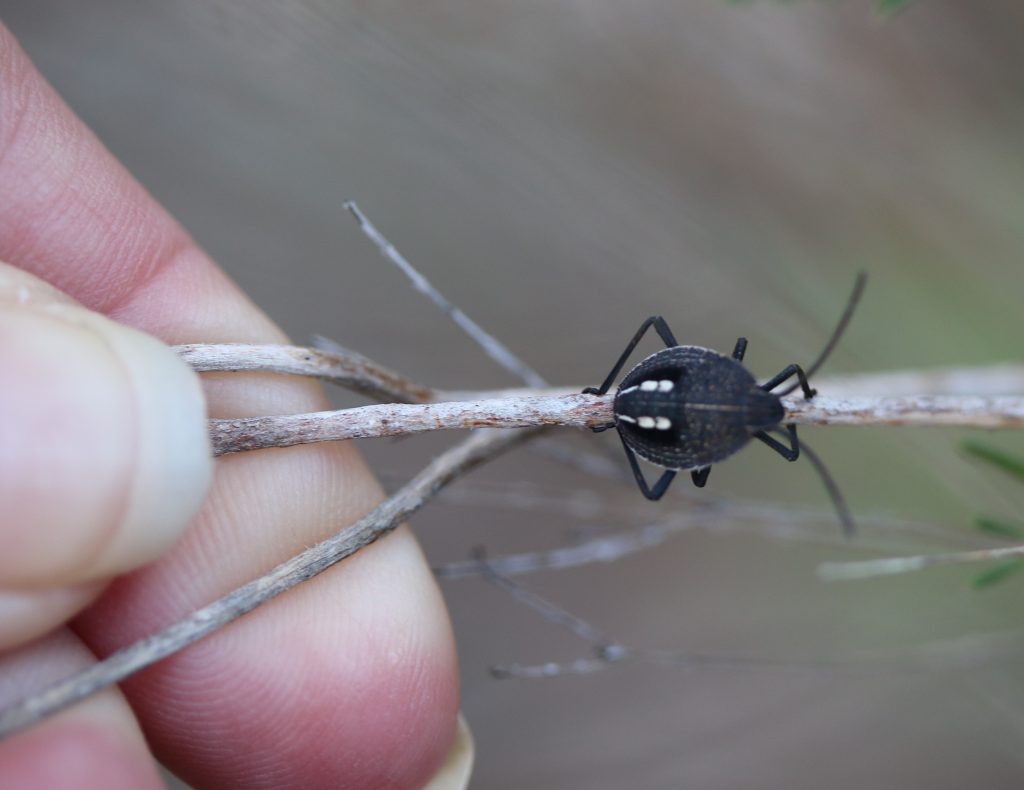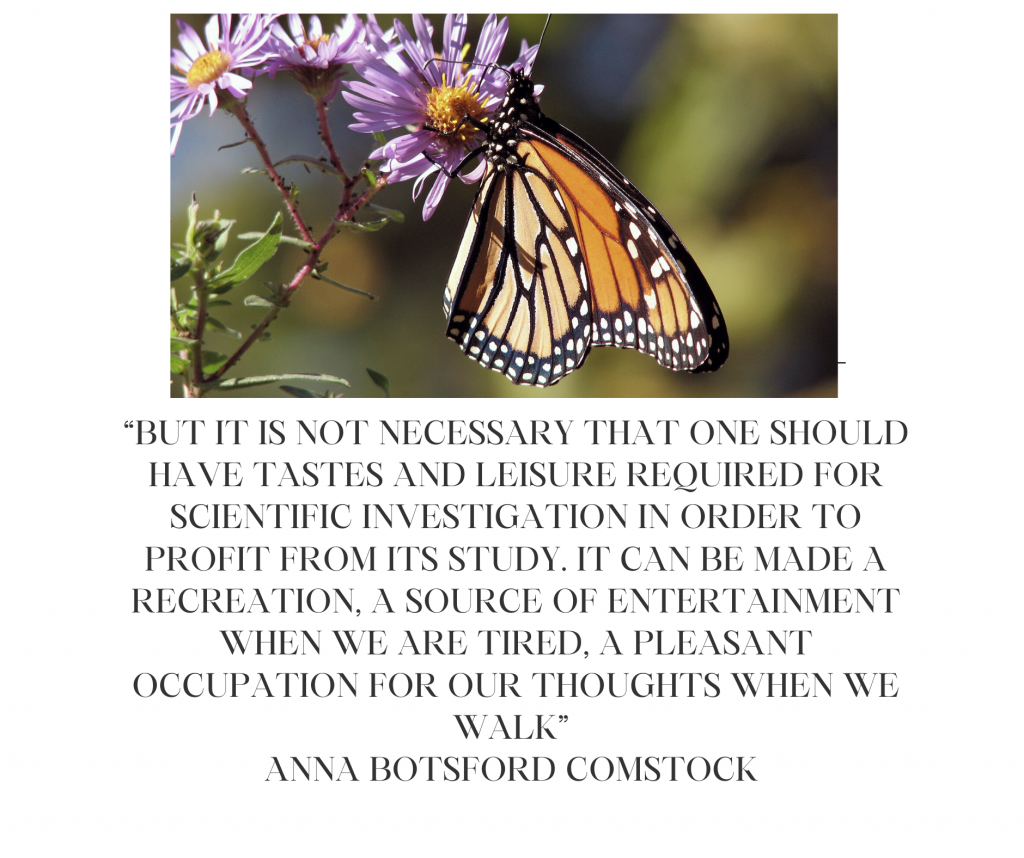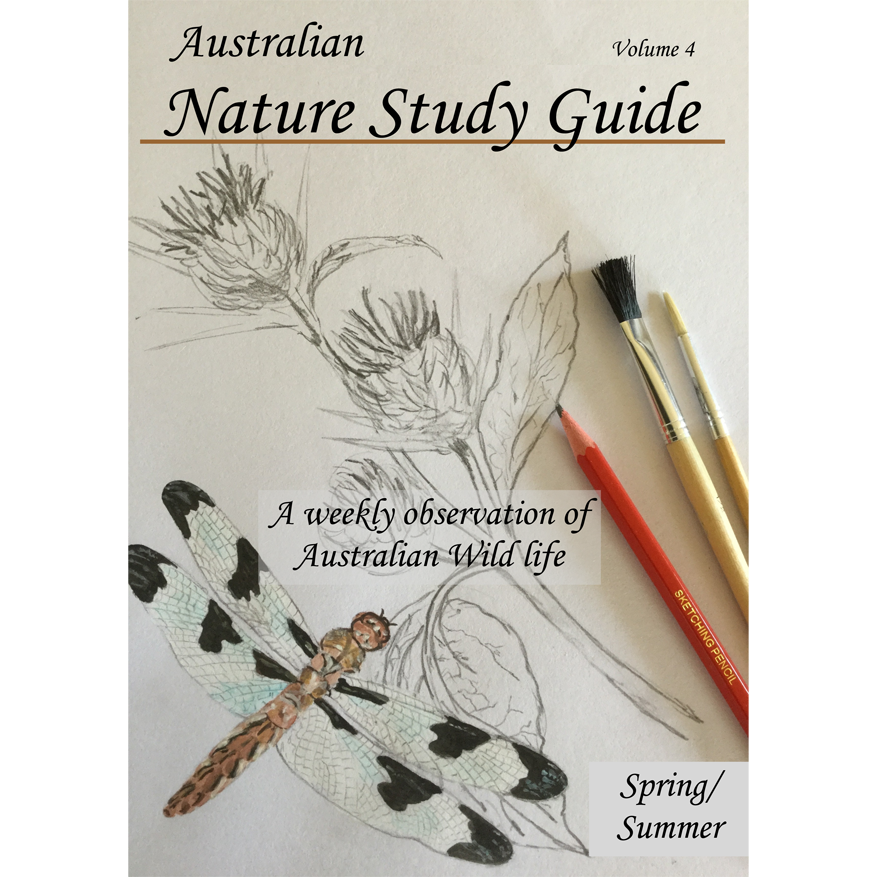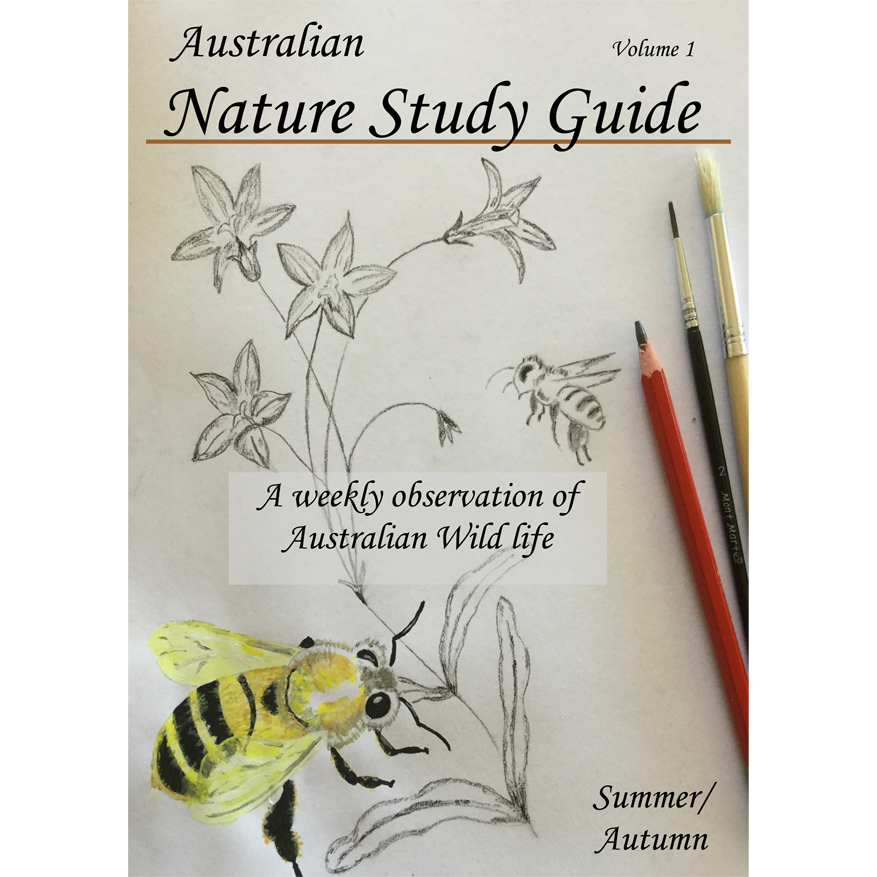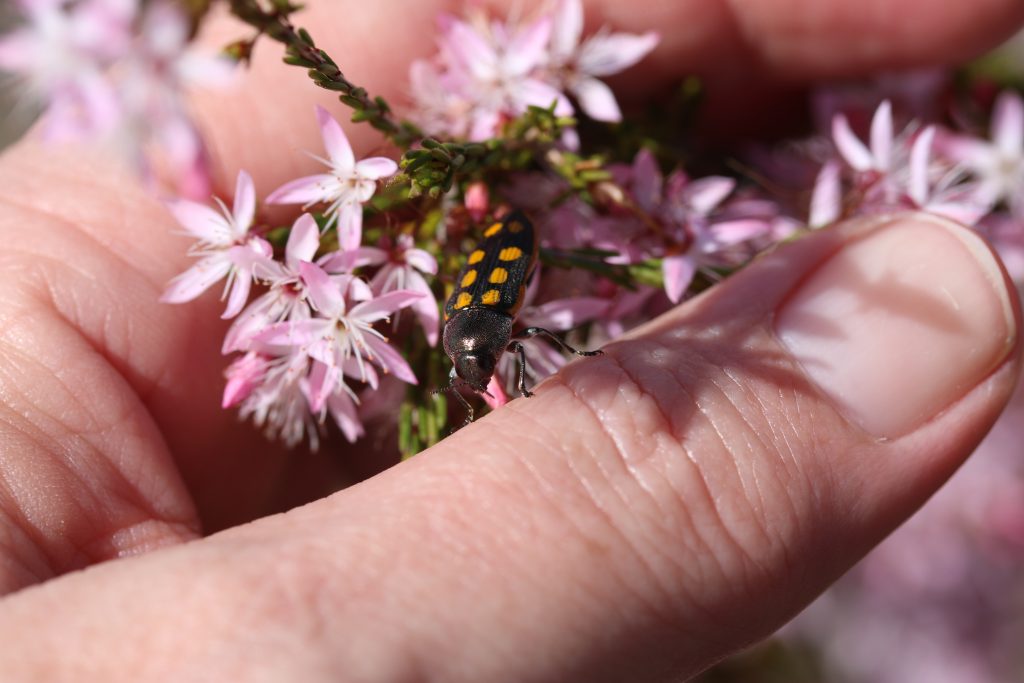
“Children are encouraged to patiently and quietly watch until they learn something of the habits and history of bee, ant, wasp, spider, hairy caterpillar, dragonfly and whatever of larger growth comes in their way… Let all he finds out about be entered in his diary, by his mother if writing be a labour to him… Where he finds it, what it is doing or seems to him to be doing, its colour and shape…” Charlotte Mason
We began a study of flora in our district and will continue our observations of nature in our area with an insect study. Connections between plants and insects are a link in our seasonal cycles.
Plants bloom with flowers of all shapes and colours, providing nectar and pollen to the insect world pollinating the plants in their quest to feed and multiply. Thus, enabling plants to fruit and seed, producing food for people and animals.
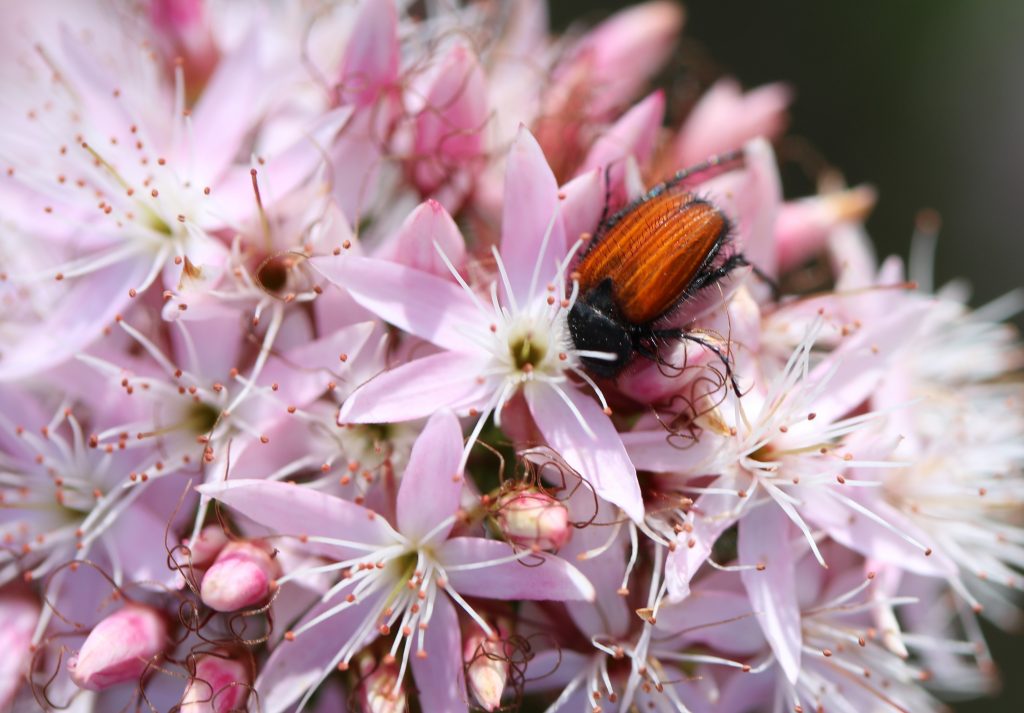
“But insects are of interest to us for other reasons than the influence they may have upon our material welfare; the study of them is a fruitful field for intellectual growth. It is not a small matter to be able to view intelligently the facts presented by the insect world, to know something of what is going on around us. And so extensive and complex is this field that no one gains more than a smattering concerning it.”
Anna Botsford Comstock
There is an abundance of insects to investigate in summer. What insects are busy buzzing around your place? We’ve noticed beetles emerging from their hiding places, eager to meet a partner and lay eggs that will eventually hatch and burrow under bark or in soil. Isn’t it amazing, that without fail, each year, a new colony of beetles emerges to pollinate and reproduce as the year before and they’ve been doing this since creation?
There are more insects on earth than any other creature and new species are discovered often. I wonder, explorer, will you have an insect named after you? Insects can be found everywhere if you have the eyes to see.
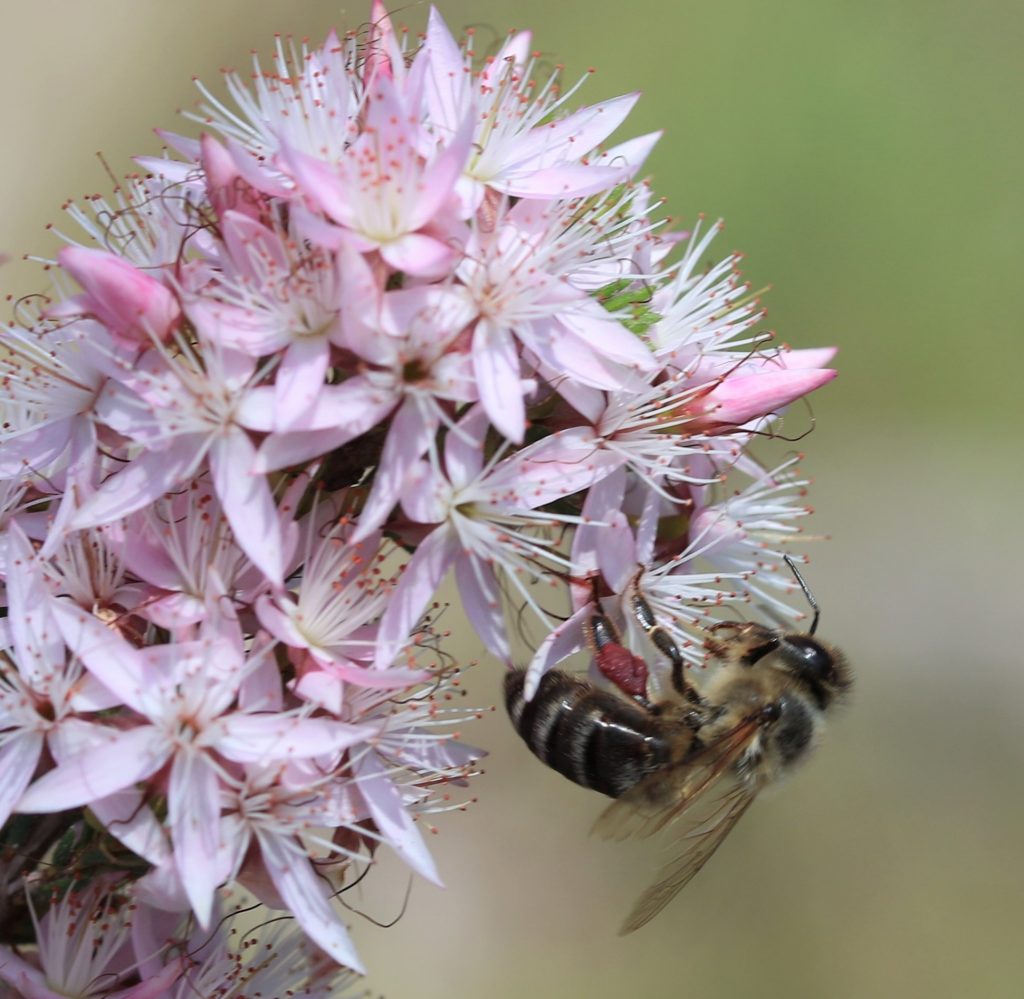
“But it is not necessary that one should have the tastes and leisure required for careful scientific investigation in order to profit from this study. It can be made a recreation, a source of entertainment when we are tired, a pleasant occupation for our thoughts when we walk.”
Anna Botsford Comstock
Table of Contents
Ideas for investigating insects:
- One way to investigate insects is to observe them as they visit flowering plants. Choose a ‘sit spot’ in front of one plant and observe the insects that visit for about ten minutes. We watched insects visit the Common Fringe Myrtle and we were amazed to see many insects swarming the shrub. Make a list to record the insects pollinating a plant and include a nature journal entry of your observations.
- Another way to investigate insects is to search for their homes. Admire their complex architecture and observe their behaviour near the nest. Think about what they’re trying to achieve. Sketch their nest and document their behaviour in a nature journal.
- Learn how to pin and preserve butterflies and moths at Woodlark.

- Discuss the anatomy of an insect. The three main body parts are the head, thorax, and abdomen. The head includes the antennae, compound eyes, simple eyes (ocelli), and the mouthparts. The thorax has six legs and the wings attached to it, while the abdomen bears the spiracles and ovipositor. Draw the anatomy of an ant in your nature journal and label the parts.
- Ask questions and investigate to find the answers. How do insects breathe? How do they hear? Can they hear? Can they see colour? What kind of life cycle do they have? Why is pollination important? Why do they moult and how many times will they moult before becoming adults? Make a list of your questions in a nature journal. You’ll find, as you explore, questions will be answered as connections are made.
- Cast your resin bug collection at Kylie Howarth
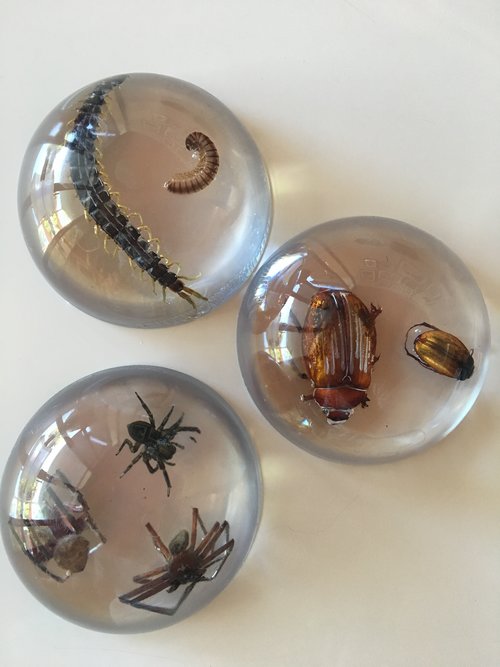
- Research and discuss metamorphosis. Which insects undergo complete metamorphoses like the butterfly or incomplete metamorphosis like the grasshopper? Draw the life cycle of an insect you have seen.
- Include the Handbook of Nature Study by Anna Botsford Comstock in the investigation of insect nature study.
- Identify the insects you encounter with a local field guide.
- Download iNaturalist or QuestaGame to share your animal or plant encounters or ask for an identification. Or create a group within the app and play with your friends.
- Buy a Chrysalis Kit and observe a butterfly metamorphosis.
- Buy silkworm eggs to watch the life cycle of a moth, or perhaps you know of someone who may have eggs from their own silkworm project.
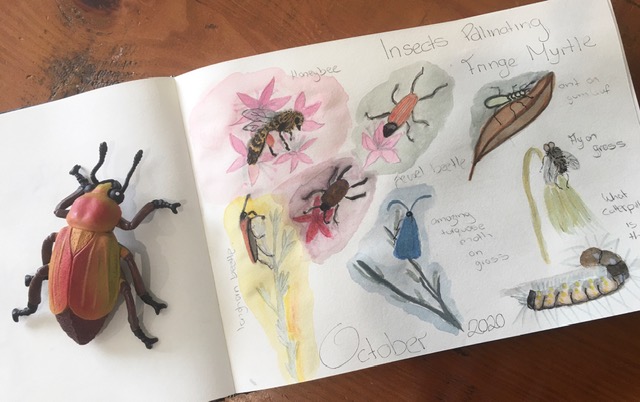
“But watch him at his investigations, he flits from thing to thing with less purpose than a butterfly amongst flowers, staying at nothing long enough to get the good out of it. It is the mother’s part to supplement the child’s quick observing faculty with the habit of attention. She must see to it that he does not flit from this to that, but looks long enough at one thing to get a real acquaintance.” Charlotte Mason
At times, when intentional nature study is desired, it’s profitable to encourage children to look a little longer for detail in the object of observation as this increases the child’s attention span and provides opportunities for questions and wonders to form.
If you need a little guidance, here are a few resources that may lead you along the path of insect investigation this season:
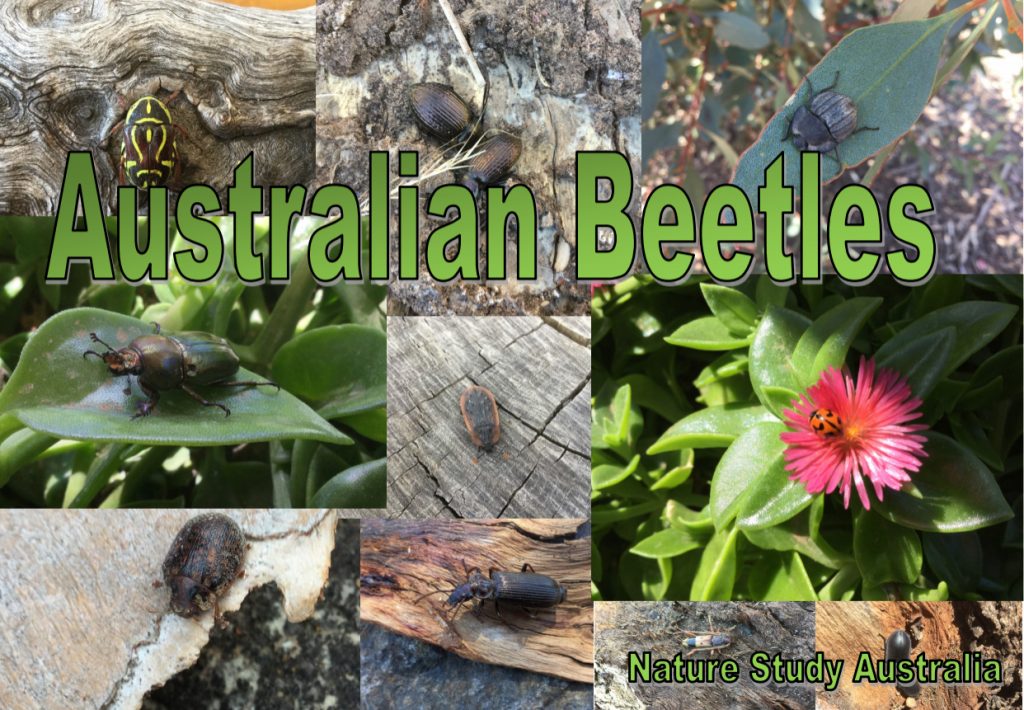
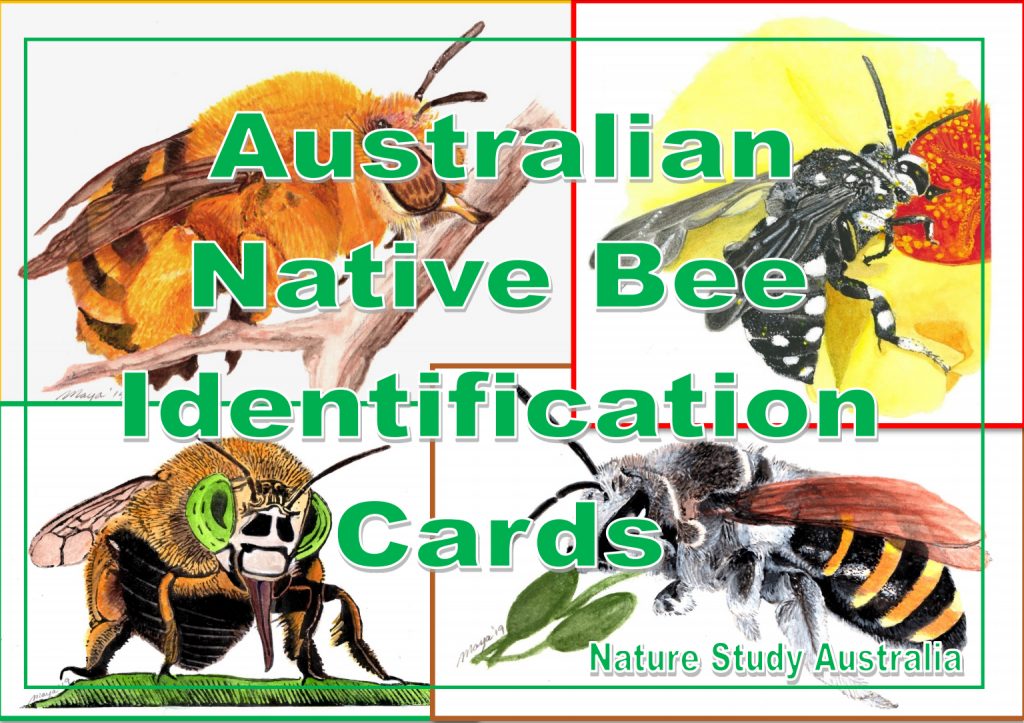
ACCESS A DRAGONFLY LESSON FROM THE AUSTRALIAN NATURE STUDY GUIDE-SPRING/SUMMER HERE.
ACCESS A HONEYBEE LESSON FROM THE AUSTRALIAN NATURE STUDY GUIDE-SUMMER/AUTUMN HERE.
CONSIDER SUBSCRIBING TO RECEIVE SETS OF TASK CARDS THAT INCLUDE FUN NATURE ACTIVITIES FOR CHILDREN LIKE THIS DRAGONFLY LIFE CYCLE.
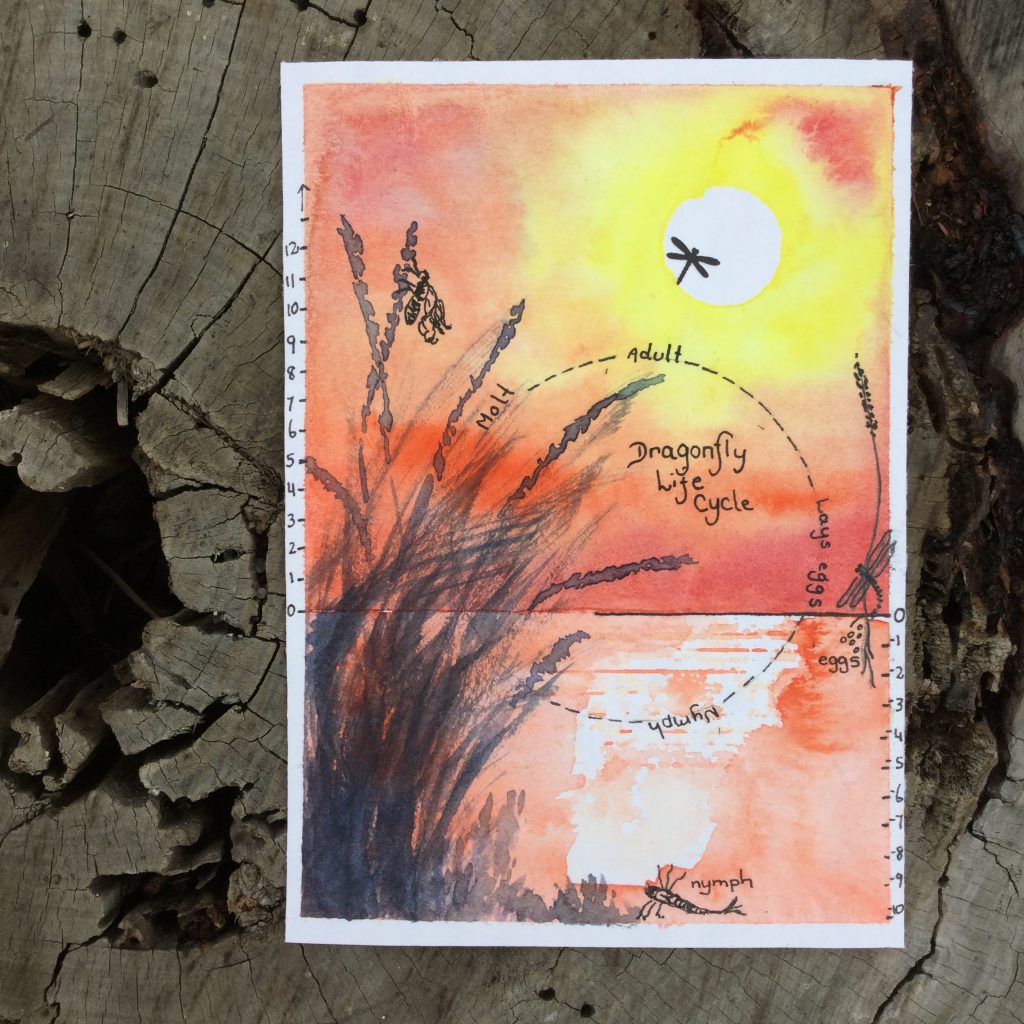
EXPECT THE PONDING TASK CARDS TO POP INTO YOUR INBOX THIS NOVEMBER.

Insects are interesting subjects to study. Did you know the dragonfly is possibly the fastest flying insect and the cicada is the loudest insect? Did you know that insects play dead or emit foul odours to protect themselves and they are the hardest working group of creatures on earth?
Come along! Walk with me…
